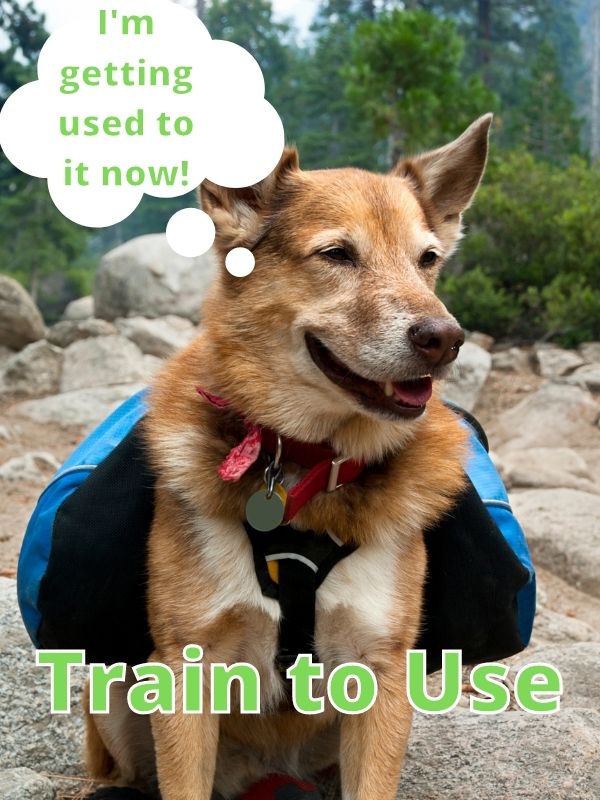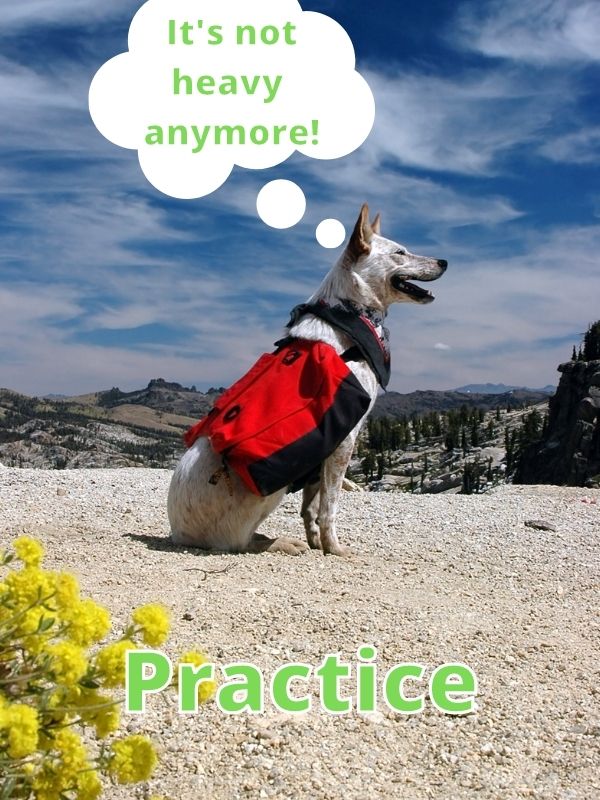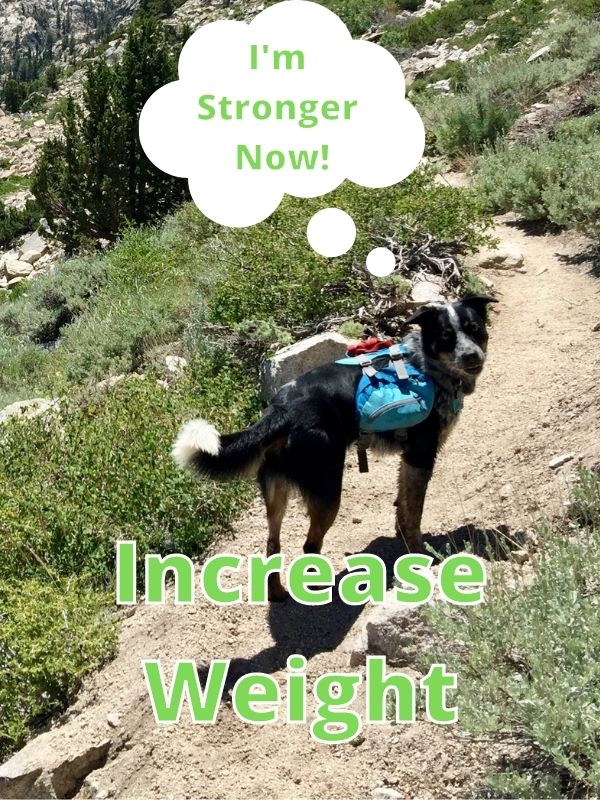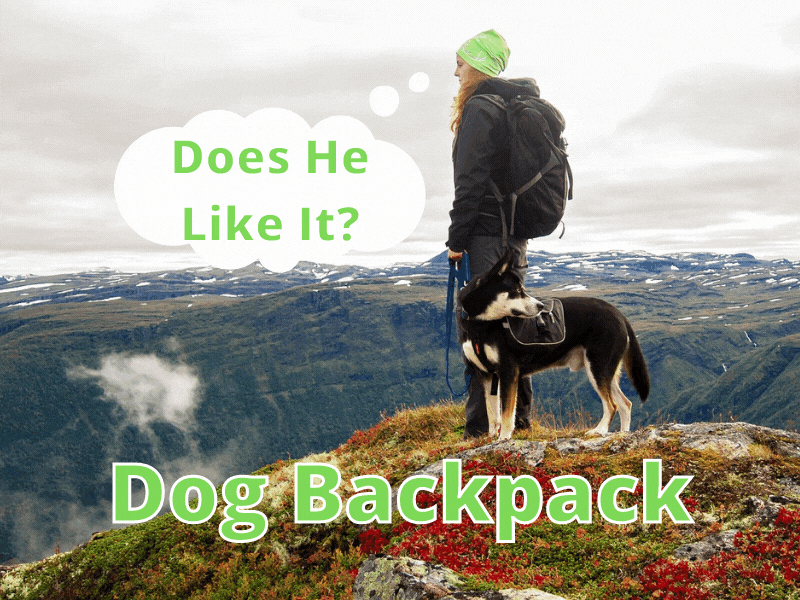Wherever you go for a walk in the park, into town, or just a stroll to the local shop, bringing your dog with you can make the experience even more enjoyable. When I walk my dog he enjoys interacting with the environment around him.
A dog hiking backpack is a pack that allows your dog to carry their own food, water, and other supplies. Most dogs enjoy having a routine and purpose when they go on a walk or hike. A hiking backpack can give them a sense of purpose when they’re out hiking with you.
Nearly all dogs can be loaded up with their own backpack, taking some weight off of you and allowing them to experience their own self-sufficiency.
Getting Your Dog Ready for the Hiking Trail
First things first, not all dogs are suitable for loading up with a backpack. Depending on their age, size and breed, there are a few occasions where you should carry their stuff for them. A good indicator would be noticing how long your dog can go for walk or hike (see article Hike With Your Dog).
But if your dog is ready, here are our tips:
1. Choose the Right Backpack

Selecting a doggy backpack isn’t about picking the very best one out there, but more about picking the one that’s best for your dog in particular and the intended use.
A bag for a small pug to wear around town is very different from the one that a German Shepherd is going to take on an epic three-day-long hike.
Before you start your search, it’s a good idea to consider what size backpack you want, as well as what style/type.
You’ll also want to check how the backpack attaches to the dog, and whether or not this fits in with your dog’s shape and size.
Things like padding and adjustable straps can make a huge difference for your dog’s comfort, as well as reduce the risk of rashes and irritation.

Ads
2. Get Your Dog Used to It

If your dog is new to the idea of a backpack, or it’s been a while since they’ve worn one, it’s a good idea to try and ease them into it as best you can to prevent them from becoming agitated or confused.
Some dogs embrace their packs without problems, whilst others can be completely resistant. Because of this, it’s a good idea to have a toy or some treats with you when first putting it on your dog.
This way, you can reward them for being persistent and let them know that it’s a good, positive thing rather than some kind of punishment or restriction.
All in all, making the initial experience as positive as you can will reassure your dog and get them excited about their new backpack.
3. Give Your Dog Some Time

Dogs, like many other animals, have quite terrible special awareness and balance, especially when you put clothes on them. It’s simple because they’re not used to it.
Your dog will likely want to walk around with their backpack just to get a feel of it and decide whether or not they like it.
During this time, they’re likely to bang and bump into things due to added weight and size – this is completely normal.
Like with initial trying on the backpack, do your best to make it a positive, reassuring experience so they don’t get put off early.
There’s no quick way around this step, so give you and your dog ample time to get used to it. It’s also a good idea not to put anything in the backpack until your dog is used to wearing it when it’s empty.
4. Increase Backpack Weight

After your dog is confident and comfortable while wearing an empty backpack, the next stage is to actually put things in the backpack.
Like initially trying on the back, the most important thing in this stage is to make gradual changes.
Whether you bought the dog backpack to test your dog’s fitness, for style, or just for convenience, don’t load it up with everything straight away.
Slowly add items one by one, allowing your dog to get comfortable with the weight before adding any more.
If your dog looks uncomfortable or is struggling, reduce the weight until it’s something your dog can handle comfortably.
5. Go Hiking with Your Dog

After your dog is used to carrying around all the things it needs to, then you’re ready to head out.
Whether it’s a walk in the park, along a trail run, or a fun hike out in the wild – head out and have fun with your furry friend!
Just make sure to keep an eye on your pup and be wary of signs that they’re uncomfortable or struggling
with the backpack.
Check that the straps aren’t rubbing, and check that their legs and spine look natural when walking.
If your dog is moving particularly slowly or breathing heavier than usual, then it’s best to take the pack off them and carry it yourself.
Other Things to Have
As well as the usual stuff you bring along when going places with your dog, depending on where you’re going, it’s worth considering some of these items too:
- Dog Towel: A lake, a puddle, a mudslide – there are endless ways your dog can get muddy, so we’d recommend bringing a towel to clean them off before they get in the car or enter the house.
- Booties: Although your dog’s feet can often harden when exposed to certain terrain, consider getting them some booties for extra protection.
- Water Container: It’s crucial for your dog to stay hydrated when out, so bring some sort of water container with you.
- Nail Clippers: Just in case they snag their claw on a rock or tree, bring a pair of nail clippers to help sort this out.
- Dog Coat: If it’s cold out, bring a coat so your dog can stay warm.
- Cooling Collar: If it’s warm, bring a cooling collar so your dog can stay cool and not overheat.
- Safety Light: If you’re heading out in the dark, bring a safety light so you know exactly where your dog is at all times.
Final Thoughts
A dog backpack is a great way to keep your dog fit, and stylish, and help them experience exactly what you do when bringing your stuff on the trail.
Though some dogs take to them without any issues, some will need to be eased into the idea, and it can take a while for them to be completely comfortable with it.
Be patient, and make the whole experience lighthearted and fun, so your dog stays reassured and calm.
And remember, even after your dog is used to it, keep an eye on them when they’re out and about, just to ensure that they’re happy, safe, and aren’t struggling too much.
If they do start to struggle with the excess weight, it’s best to give them a rest and carry it yourself.
Thanks for visiting Helpshoe.com



